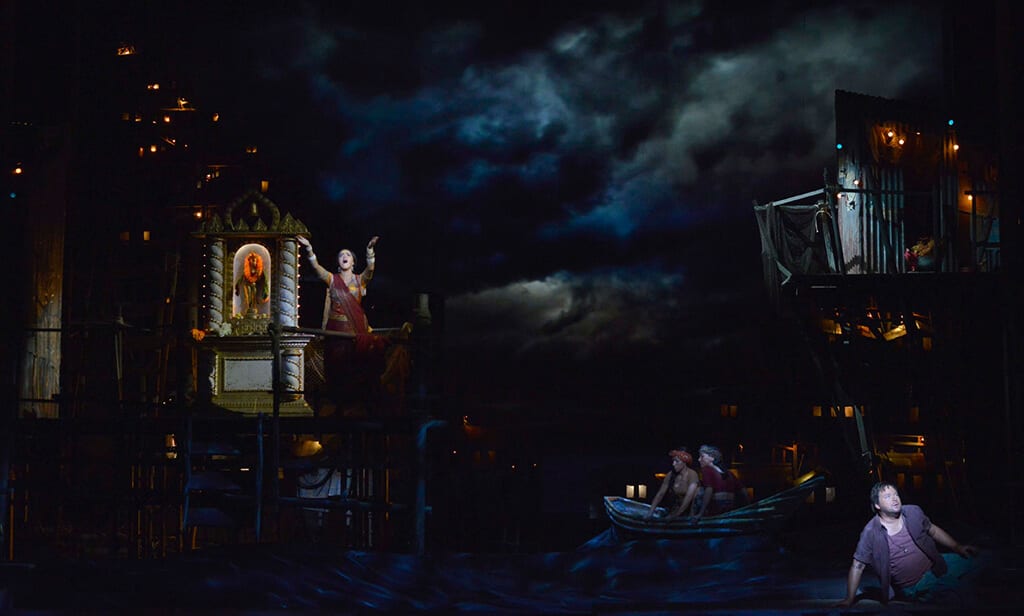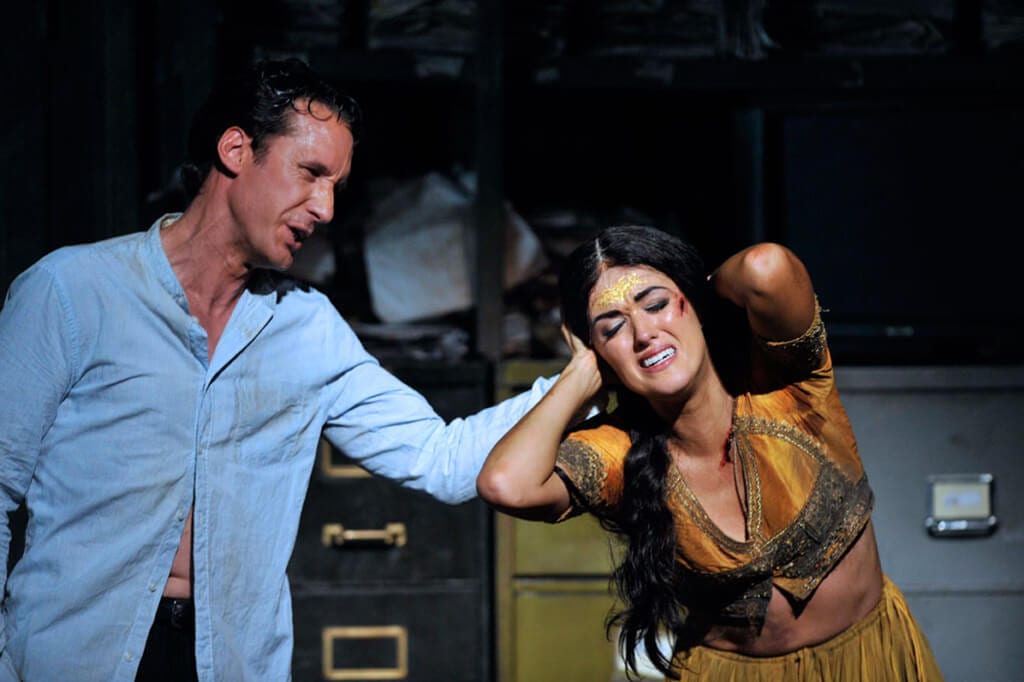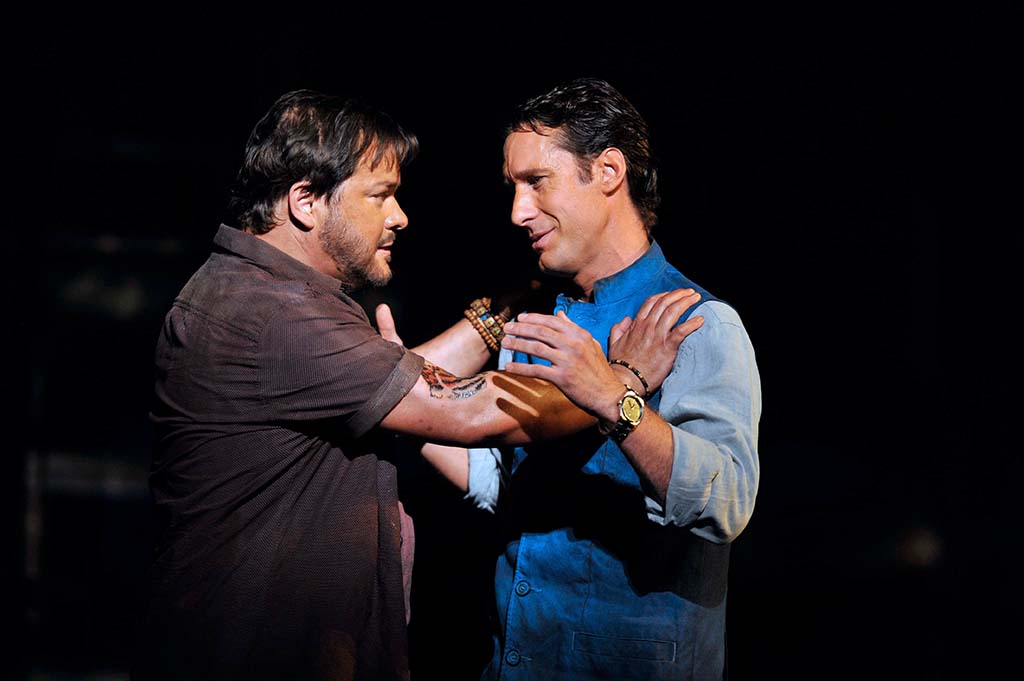The Pearl Fishers is one of the early works of the French composer Georges Bizet. He was in his mid-twenties at the time of the composition, trying to establish himself in the world of opera. The musical style of the composition shows the strong influence of both Italian and French traditions, mixed with Wagnerian elements such as the use of fortissimos in many orchestral and choral moments. The opera is set in an unspecified village of the Far East. ‘Exoticism’ was quite fashionable in the mid-19th century, and that is reflected in some chromatic elements of the music. The orchestration is not particularly refined, and the plot of the libretto is implausible. However, we are able to glimpse Bizet’s genius, which will fully express itself twelve years later in his famous opera Carmen, thanks to an instinctive sense of drama, the use of rich colour in the music and the presence of touching and intense moments throughout the opera.
This revival of the 2010 ENO production sets the scene in a contemporary shanty town where villagers live side by side with floods and natural disasters within a tribal political and religious structure. The plot revolves around a love triangle between King Zurga, the fishermen Nadir and the beautiful priestess Leila, with all the subsequent clichés of forbidden relationship and betrayed friendship. After a short evocative prelude with a beautiful scene of underwater pearl fishers, we are plunged immediately into the drama: Zurga is acclaimed ruler of the village. Jacques Imbrailo in the role of the leader is not convincing, neither vocally nor dramatically. However, he will be more credible as a disappointed lover and betrayed friend later on in the opera. Robert McPherson in the role of Nadir delivers a very weak performance throughout, and unfortunately the two most famous parts of the opera, the duet of Zurga and Nadir and the tear-jerking barcarole “Je crois entendre” don’t particularly impress the public. By contrast Claudia Boyle, in the role of the priestess Leila, is able to engage the audience in all situations. Her coloratura in the first act is precise and effortless, the lyrical moments in the second act leave the public spellbound and, even if the voice is not particularly powerful, her acting and stage presence are very apt.
A superb choir conducted by James Henshaw is the common thread of the performance and the bearer of collective feelings, which ranged from subservience to rebellion, from bigotry to vengeance, from hope to fear. Especially during the scene of the storm the desperation feels real and is enhanced by visual effects and images of floods that strongly connect the performance to the many natural disasters of recent years. The orchestra, under the conduction of Roland Boër, helps to deliver the power of the choral moments. But it is not effective enough in capturing the nuances and delicacy of some moments of Bizet’s score.
Despite some shortfalls, this production has merit, bringing this peculiar opera closer to a modern audience by means of beautiful scenes and powerful musical moments.




